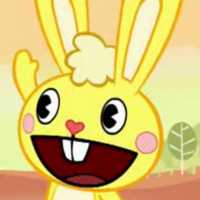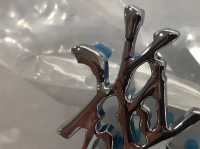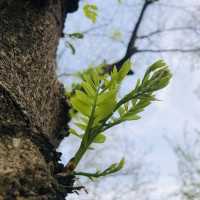At the entrance of Niuche Shuiyuan Museum, there is a figure sculpture of "Red Headscarf" and a pair of huge wooden clogs. These two things vividly tell visitors that the ancestors from Lingnan of China are introduced here. When you enter the room, you can buy 15 NT/person tickets in cash at the service desk. The tickets contain the use of guides. Therefore, in the introduction of Chinese explanations, you can stroll in this three-storey building, which occupies a small area. First of all, we visited the scene of the tailor on the first floor. Besides the tailor's shop and clothing store, we also visited the living place of the tailor. Singaporeans are really admired for their care in this respect. All the scenes are arranged according to the original situation, so it is a bit of a historical experience. Rules, brushes, fabrics, scissors and even record books on the operating table all seem to be in use, but the wall calendar tells people that it was more than half a century ago. Although there are not many visitors in the original appearance hall, there are a continuous stream of visitors. Besides Chinese, there are also tourists from Europe and the United States. It's a aftertaste for us and a novelty for them. The most interesting one is a preschool child, also has the earphone which wears the guider in the model, listens to the introduction very earnestly in the library and watches the physical object. Walking up to the second floor, we can see that there are many people of different identities living in the very narrow house, which is more simple and dense than the tube tower. People living here have three-wheelers, carpenters, mobile vendors and other people belonging to the lower strata of society. Seeing such poor living conditions, one can imagine how low the status of Chinese people in Singapore in the lower Nanyang in the nineteenth century is. Here we know the term "red headscarf" which refers to women who work in docks, factories or construction sites. We also know the name "Majie", they are from Shunde, Guangdong Province, who work as domestic servants for the rich "women who comb their heads without marrying". There is also a doctor's room on this floor. As an intellectual, his family's living standard is obviously different from that of the working people. But the price list at his door also marked "the poor are exempt" and the traditional Chinese way of helping the poor came across the sea to Singapore, a strange land. On the third floor of the Museum, there are many historical photographs and cultural relics to show all aspects of the overseas Chinese's life in the South China Sea. These photographs enable us to know more about the Chinese's life in Singapore at that time. From the inheritance of these historical records and the continuation of traditional culture, we can see a connotative force of the Chinese nation. Unexpectedly, in Singapore, the first day of sightseeing gave us a traditional culture and patriotism education lesson. Returning to the first floor exit of the original appearance hall, there is a huge contrast between old and new pictures of the buffalo cart water on the wall, as well as the introduction of many enthusiastic participants in the protection of the original appearance of the buffalo cart water. Any inheritance of history can not be separated from people, but also from people's vision.













